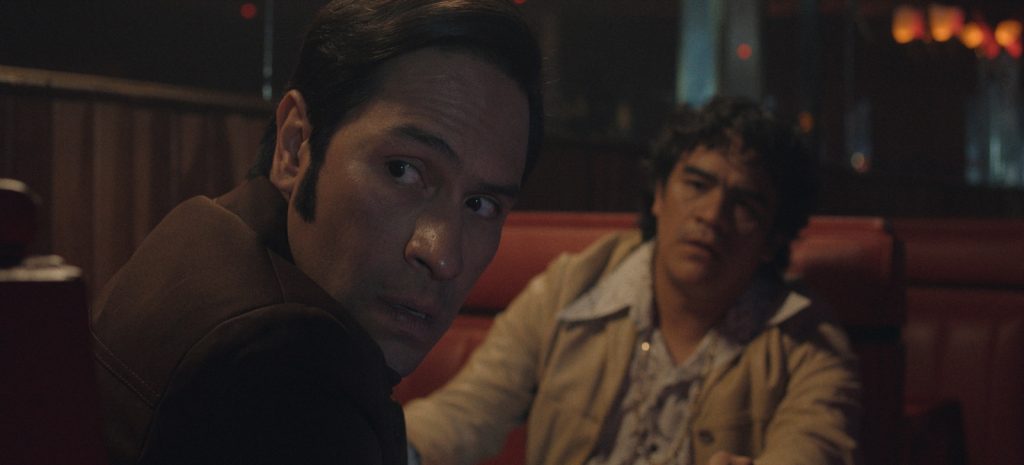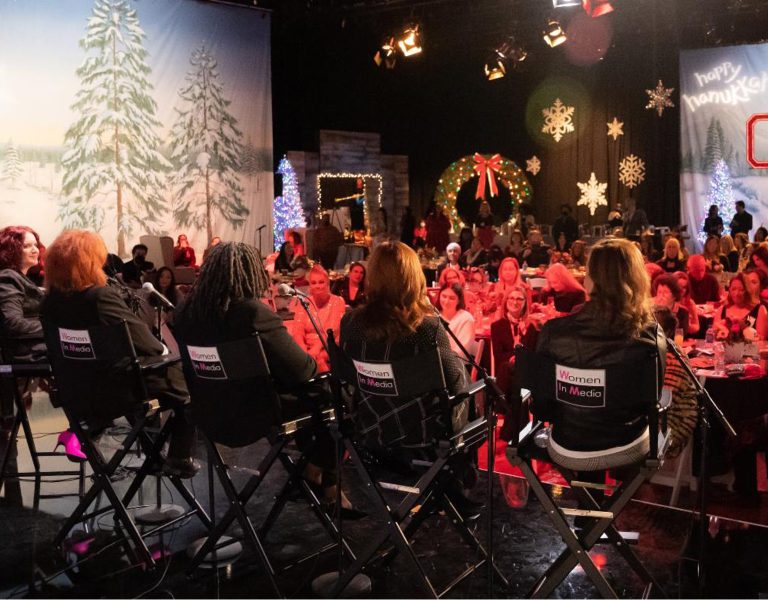Maria Sarasvati Herrera / Women in Blue (Las Azules)
Sep 17, 2024

Las Azules (Women in Blue) is a 10-part Spanish-language crime drama on Apple TV+, set in 1971 Mexico City and based on true events. It explores the story of Mexico’s first female police force, focusing on four women—María, Valentina, Gabina, and Ángeles—who defy societal expectations to join the unit. However, their involvement turns out to be part of a publicity stunt designed to distract the public from a serial killer terrorising the city. Undeterred, they take matters into their own hands, embarking on a covert investigation while facing sexism and challenges within the male-dominated police force.
The show blends real historical context, such as the creation of this pioneering female squad, with a fictionalised serial killer plot. It offers a poignant exploration of women’s struggles in the workplace, particularly in traditionally male roles, emphasising themes of empowerment and resilience.
Maria Sarasvati Herrera AMC, the only female cinematographer on the project, played a vital role in bringing the series’ narrative to life. Working alongside cinematographers Daniel Jacobs and Alejandro Martínez, she helped visually capture the era and the unique challenges faced by these trailblazing women. Here’s an insightful Q&A with Herrera, where she delves into her crucial role in shaping the visual storytelling of Las Azules.
Q: Which cameras and lenses did you use and why?
A: We used the Sony Venice 2 because we like the tones of black it has in low lights. For lenses, Cooke S4 Uncoated and Angénieux Zooms. We wanted a vintage look from the ’70s, lenses that could have detail but had some interesting texture.
Q: How did you light the production?
A: For the police station, we used LED panels as a base and 20K and 10K tungstens as the sun. We also had smaller panels that we moved depending on the shot. In locations like the abandoned hotel in episode six, one of my favourites, I lit mainly with Astera tubes and panels. We installed the disco ball for a background effect with Evokes from Nanlux.

Q: What were the biggest technical and logistical challenges and how did you overcome them?
A: The biggest challenge was a scene I did for episode four where Gerardo arrives at night on a highway in the woods. We used sky panels at several points in the terrain, it was very cold and misty, and it was raining all night long. I mixed 5K tungsten and led panels in 7000 kelvin, and we built an 8ft softbox as a key light.
Q: Did you use blue or green screen and why?
A: We used blue screens in some streets where we had to recreate Mexico in the ’70s.
Q: What was your favourite scene or sequence and why?
A: I love the scenes in the basement, and in the abandoned hotel’s kitchen in episode six. Those scenes create a contrast between the police stations and what happens behind them. It opens two worlds that develop at the same time, one with the women, and the other with men.

Q: How were you introduced to the project?
A: I was invited by a director I had worked with on a feature. In the beginning, the plan was to be the DP in his block, but since the logistics were complex, I ended up working with another director, Carlos Moreno, who also became a good friend.
Q: How was the project first described to you?
A: I was told it was a thriller based on a true story in the seventies when the first women’s unit was introduced to the police. I knew Alejandro Martínez was the main DP, I was interested in learning from him. He has a method that is rare in Mexico, which is to create a LUT three steps down in low and mid lights. This method allows you to be protected in low light but it also changes the texture of the skin and requires a lot of lighting.
Q: Which episodes did you shoot?
A: Five and six as a main unit, but I also did the second unit in the series.
Q: How would you describe your working relationship with the directors/creators/showrunners?
A: We were always communicating, and this made our work much more focused. We were allowed to make our own decisions regarding creativeness, we could create our own lightning and language as long as we followed the rules that Alejandro and the Showrunner, Fernando Rovzar, had established in the first block. We had a platform where we could watch the rushes and stills from every shooting day, so we all were very aware of the style that we were creating together.
Q: Was a visual look specified? How much creative freedom did you have?
A: There was a “Manifest” that we had to follow, but the rest was for us to create and imagine. I think the most important element was the LUT.
Q: Did you develop any new techniques you used when lensing the show?
A: Not particularly myself, but I learned this new method, which was to work with that LUT, so I had to think about lightning in a whole different way, always looking at the DIT monitor.

Q: If any, did you draw any inspiration for other art forms for the look of the show, or were there any previous shows/films that inspired you?
A: Se7en, Jackie, Zodiac, Carol, Mrs. America and Munich were the main references.
Q: What about the story interested you the most?
A: The fact that it was a period series, and that the main characters were women. This is in fact, a feminist series and I was the female element in the Cinematography department, so it meant a lot to me.
Q: What research did you do when taking on such a project?
A: We watched many film references to understand the use of camera movement in thrillers and the visual language used tell the story in a fun and vintage way.
Q: What was your most challenging shot, what scene was your favourite to shoot and were there any challenges to overcome, or happy accidents?
It was a scene from the second unit. The scene took place on a highway in the forest at night and it was very cold and misty.
A: Do you have a favourite episode, or one would you prefer to submit for ASC Awards, Emmys, etc?
I think episode six. It was challenging but we had amazing locations, like an abandoned hotel, where the torture takes place.

Q: What is the most important thing about this show in your opinion?
A: To recognise the labour of women in jobs that are mostly run by men. During the shoot, there were women police officers who approached and asked about the show. They wanted to know whether it was true that we were making a series about them. It was touching to see their faces when they learned they were being recognised. We also received visits with the real characters — the first squad of women in the police department. They were amazed to see how much we cared about their story. They went through so much trouble to be a part of the department in the ’70s. The fact that we were acknowledging their fight, was overwhelming. It was an honor to work on a series that helps to expand the position of women in society.



















